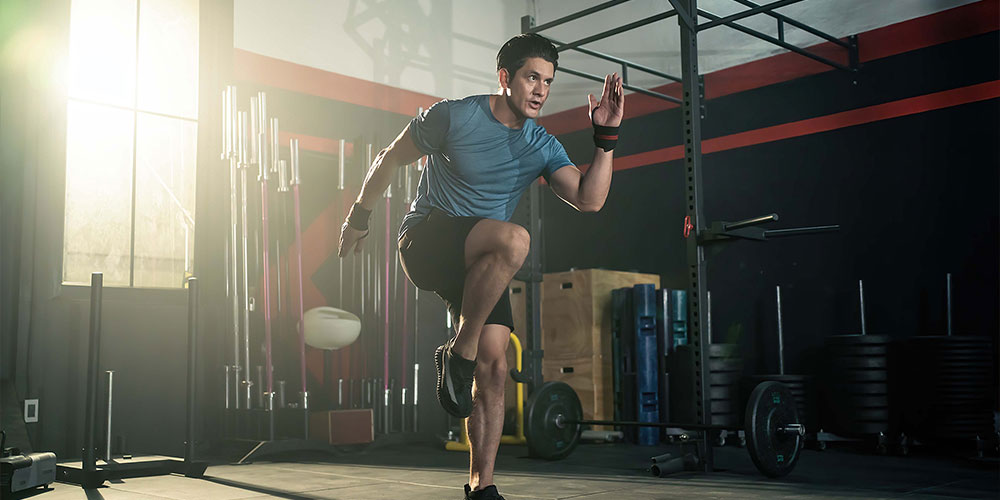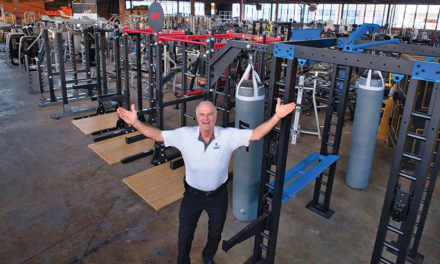In the running world, few things get that dopamine flowing, like smashing a new personal best (PB). But where do you start? Below, I’ll break down my five pillars of faster running. And make no mistake, these are in order of importance, so start with number one and build these things into your training progressively.
1. STRENGTH TRAINING
What, you thought I would just give you a bunch of track workouts? Au contraire. Strength = Durability. The thing that will sideline you the quickest is not being prepared to handle more impact. You experience up to 8x your body weight every stride when you run fast, so we must get our muscles, ligaments, and tendons prepped to handle that. We recommend progressing to (heavy) resistance training at a minimum of 2x per week. Three is better. At first, you’ll want to plan these days as stand-alone workouts or along with easy runs, but we find that once you have the habit formed, you can lift and run fast on the same day, and the strength acts as a major muscle activator. Oh, and don’t forget to lift your core heavy, too! Every time you contact the ground, it’s trying to knock the wind out of you. A strong core makes breathing a heck of a lot easier.
2. BASE MILES
You can run more often, run longer, or a bit of both, but the fact is, the bigger the base you develop, the faster running you’ll be able to handle. Base = Fatigue Resistance. We’ve seen a lot of runners crank out some really fast times doing ZERO speed work and just a lot of base. You DO have to run fast to get faster, but that is more realistic once you’ve optimized your possible weekly mileage. If we have an athlete only running 2x per week, we’ll try to get them to three before we worry about speed work. If they can ONLY run 3x per week and are running decent mileage, we go to pillar three.
3. NEUROMUSCULAR COORDINATION
We refer to this as “fast form” or “speed skills.” This is anything that forces the body to move faster for short periods. Usually 10-30s. Not long enough to put a major load on the body, and not long enough for form to really break down, but long enough to teach the muscles how to fire faster. This can be drills, plyometric exercises, short sprints, stride outs, etc. The rule of thumb is to move fast, keep it short, and ensure you are fully recovered before hitting another effort. This is not base training, so don’t worry about total mileage. We are working on the brain-to-body connection. Ultimately, this is the most enjoyable form of speed training and the type that can be done the most frequently
4. TRACK WORKOUTS
Here we are, finally running fast. The simplest goal here is to amass time at high speed. You will normally break up a distance, say 5k, into equal smaller parts, like 12×400 meters (not exactly 5k). Then, run each of those at a pace between 5k and a mile pace, with equal parts work and rest. So if you run a 400 in two minutes, you will take two minutes to walk/jog between efforts. Then, you can progress that workout to 6×800 meters, 5×1000 meters, etc. Pretty soon, you’ll be running faster than a 5k pace for each effort, and you’ll be ready to smash a true 5k effort. For most people, these workouts should only be done once a week! That’s it; a little dab will do ya.
5. SPEED ENDURANCE WORKOUTS
Now we are trying to string out longer intervals and hold pace (and form) longer. Also known as tempo and steady-state workouts. These types of workouts are generally the highest impact sessions you can do aside from actual races and, like track workouts, should only be done once a week unless you run five-plus days a week. We are still trying to amass time at pace with some easy running between efforts. The easiest way to design these sessions is to take your goal pace for a distance, figure out the total time, and break that into intervals. So if you are training for a 10k, you can do 10x 4-6 minutes at your goal 10k pace, with 2-3 minutes easy between. Again, these are big days, so they would require plenty of recovery after them before the next quality day.
Dale Sanford is the co-founder of BPC Performance, Inc. and has been coaching endurance athletes worldwide since 2009. You can catch up with Dale @bpcperformance on IG, visit buildpeakcompete.com, or listen to the Coaches on Couches Podcast.







